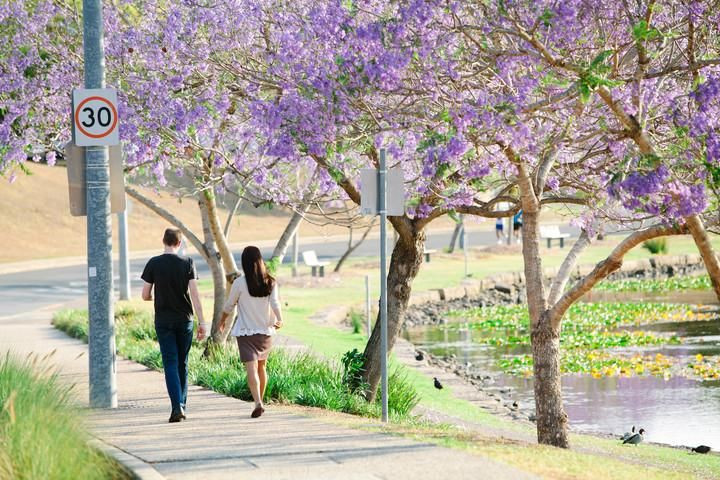Thirty Minutes Of Nature A Week Reduces High Blood Pressure And Depression

Odds are if you’re reading this, you reside in a city. More than half the world’s people — or just about 3.5 billion — now live in urban areas. That number is expected to swell to 5 billion by mid-century, according to the World Health Organization. A new study shows that while you can take the people away from nature, it’s a bad idea to take nature away from the people. University of Queensland researchers are among the first to advise how often and how intimately city dwellers need to engage with nature for it to make them healthier.
Some experts regard nature as the antidote to 21st-century maladies like childhood obesity and even crime, citing the numerous previous studies over more than 40 years that attribute lower blood pressure, lower rates of heart disease and allergies, and better mental health, among other benefits, to spending time in nature. As a result, cities everywhere are upstarting and upgrading green spaces — the 100 largest cities in the United States spent $6 billion to do so in 2015 alone.
Because current advice about how green spaces improve public health is general at best, the Australian researchers set out to pinpoint what would make these investments cost-effective. They sought to learn how frequently a person should visit nature and how long they should spend there to reap benefits like better state of mind and lower blood pressure. Since not all nature is created the same, they also measured how the quality and quantity of green space provided health benefits. The study results suggest we all may need a minimum dose of nature: 30 minutes in at least one visit a week is ideal.
The research team surveyed 1,538 people ages 18-70 who reside in Brisbane, Australia, a city where baseline exposure to nature is likely to be high because there are about 2,000 square feet of green space per person and 36 percent tree cover. They recruited an equal mix of males and females who matched the sociodemographic makeup of the city. Information about depression, high blood pressure, social cohesion, and frequency of physical activity — four health issues known to improve with time spent in nature — was collected from the participants.
The researchers believe these health outcomes could be tied to exposure to nature in more than one way. For example, a landscape full of plants may be linked to better physical, mental, and social well-being because it reduces stress and mental fatigue and because it makes a nice place for gathering with friends or getting exercise. Participants were asked how often they visited green spaces, how vegetated those areas were, and how long they spent during these visits.
The study showed that participants who spent at least 30 minutes in nature per visit over the course of one week were less likely to be depressed or have high blood pressure and more likely to be physically active. Making more frequent visits to nature was linked to increased social cohesion, and participants who said they felt more connected to nature had greater levels of social cohesion and physical activity, even if they were not less likely to feel depressed or experience high blood pressure.
Residents who failed to spend an average of 30 minutes or more within a visit to a green space during the course of their week were 7 percent more likely to show signs of depression and 9 percent more likely to have high blood pressure.
In a statement, University of Queensland researcher Dr. Danielle Shanahan said these results suggest people might need a minimum "dose of nature.”
"If everyone visited their local parks for half an hour each week there would be seven percent fewer cases of depression and nine percent fewer cases of high blood pressure," she said.
"Given that the societal costs of depression alone in Australia are estimated at $A12.6 billion [$9.5 billion] a year, savings to public health budgets across all health outcomes could be immense," she said.
Source: Danielle F. Shanahan, Health Benefits from Nature Experiences Depend on Dose. Scientific American.



























